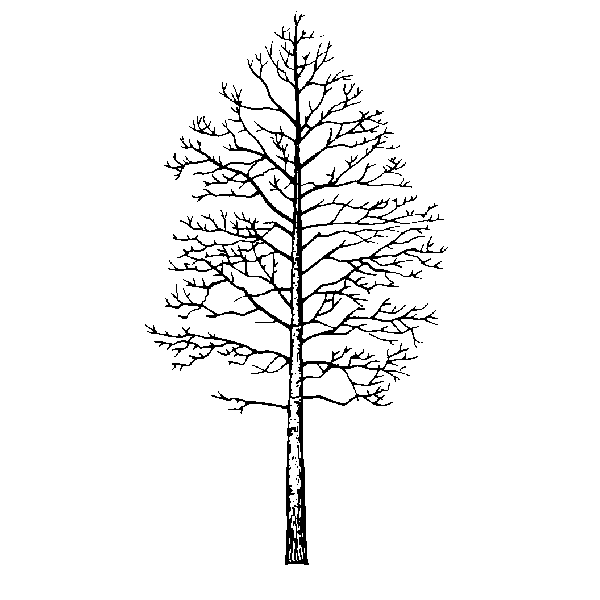喫茶TAKEYA
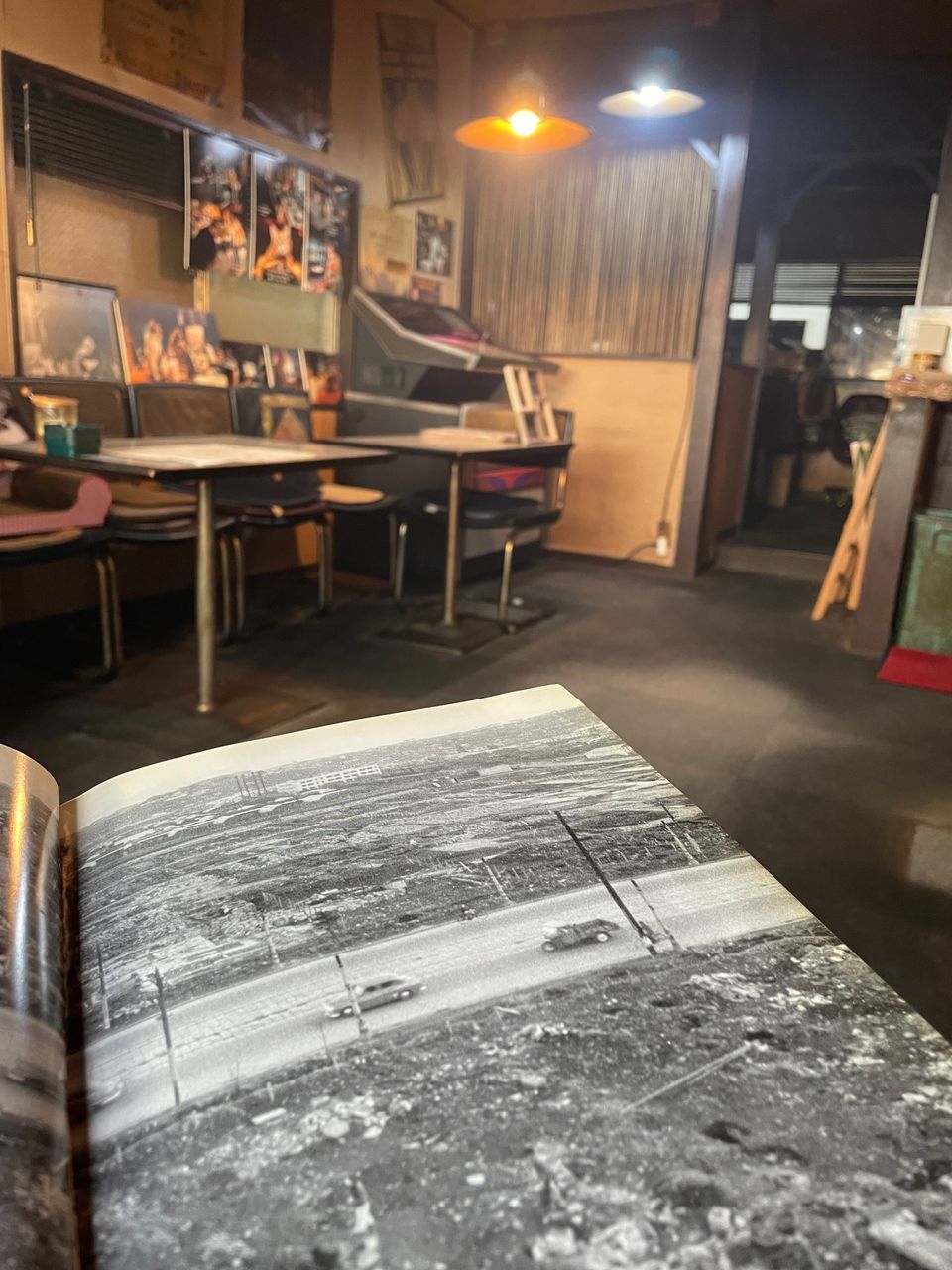
Trembling Aspen | Series_03 Here, in Koganecho | Issue_05
In search of maker time,* I headed to a nearby coffee shop I had just discovered, 喫茶TAKEYA.**
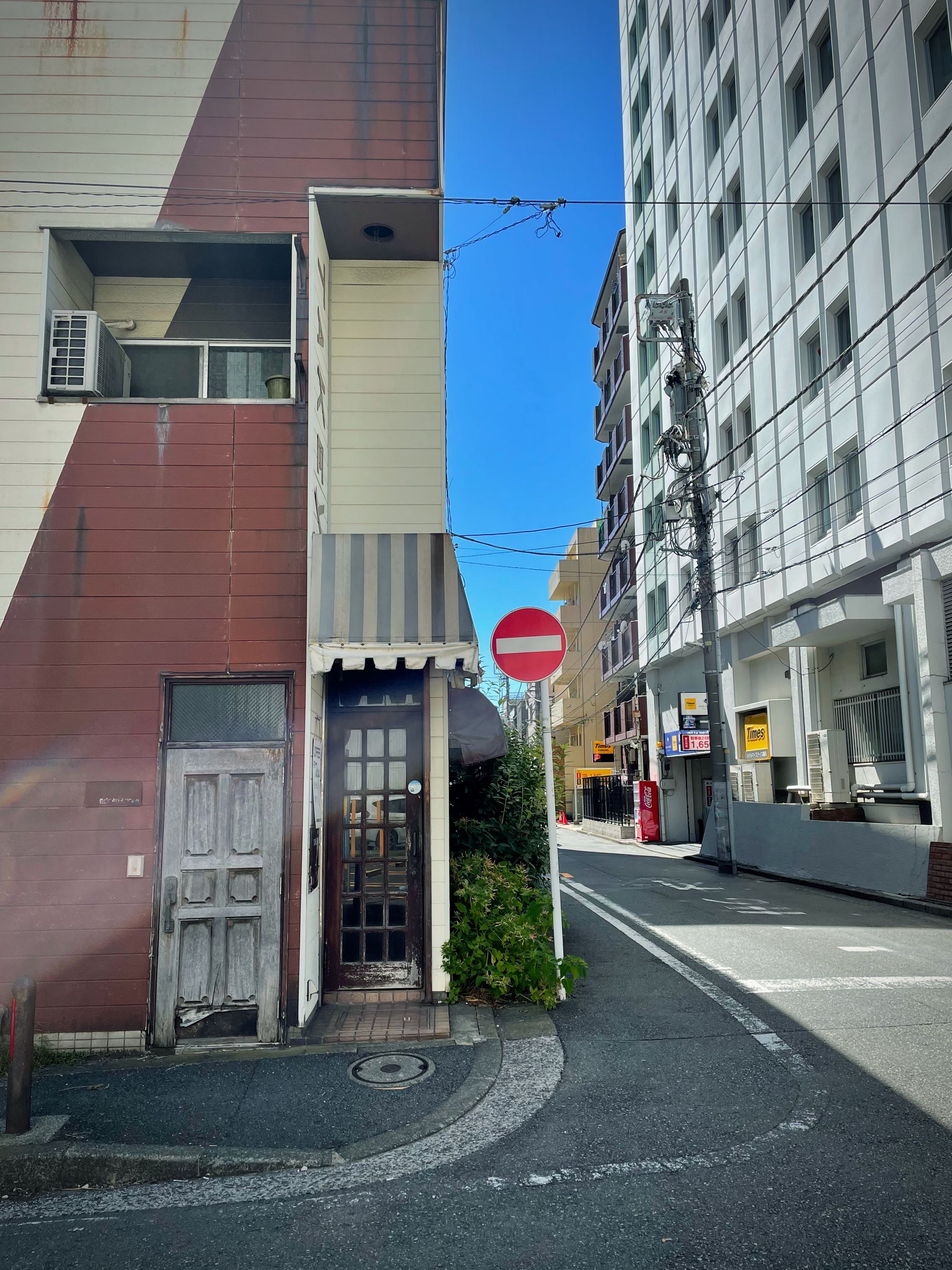
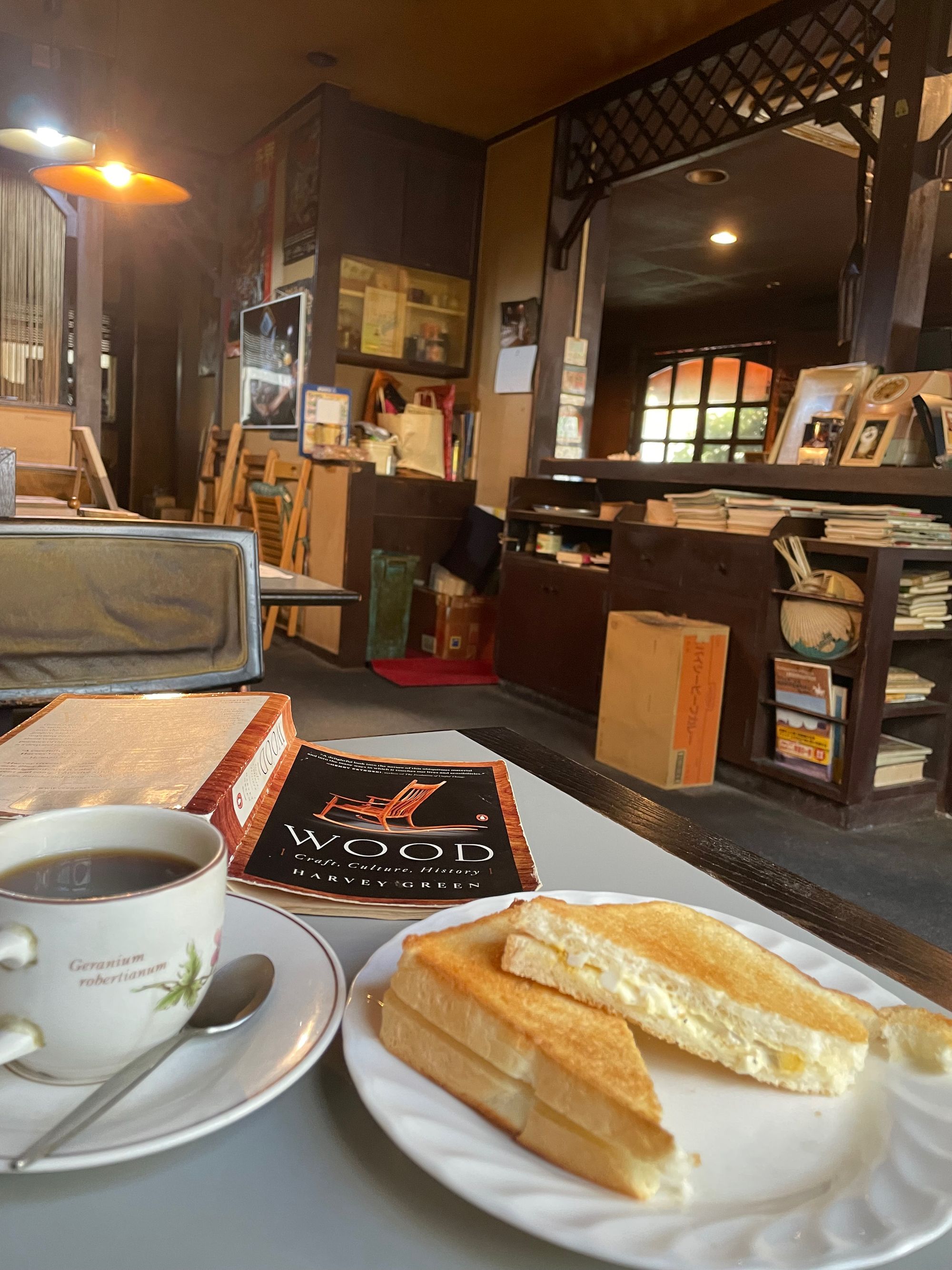
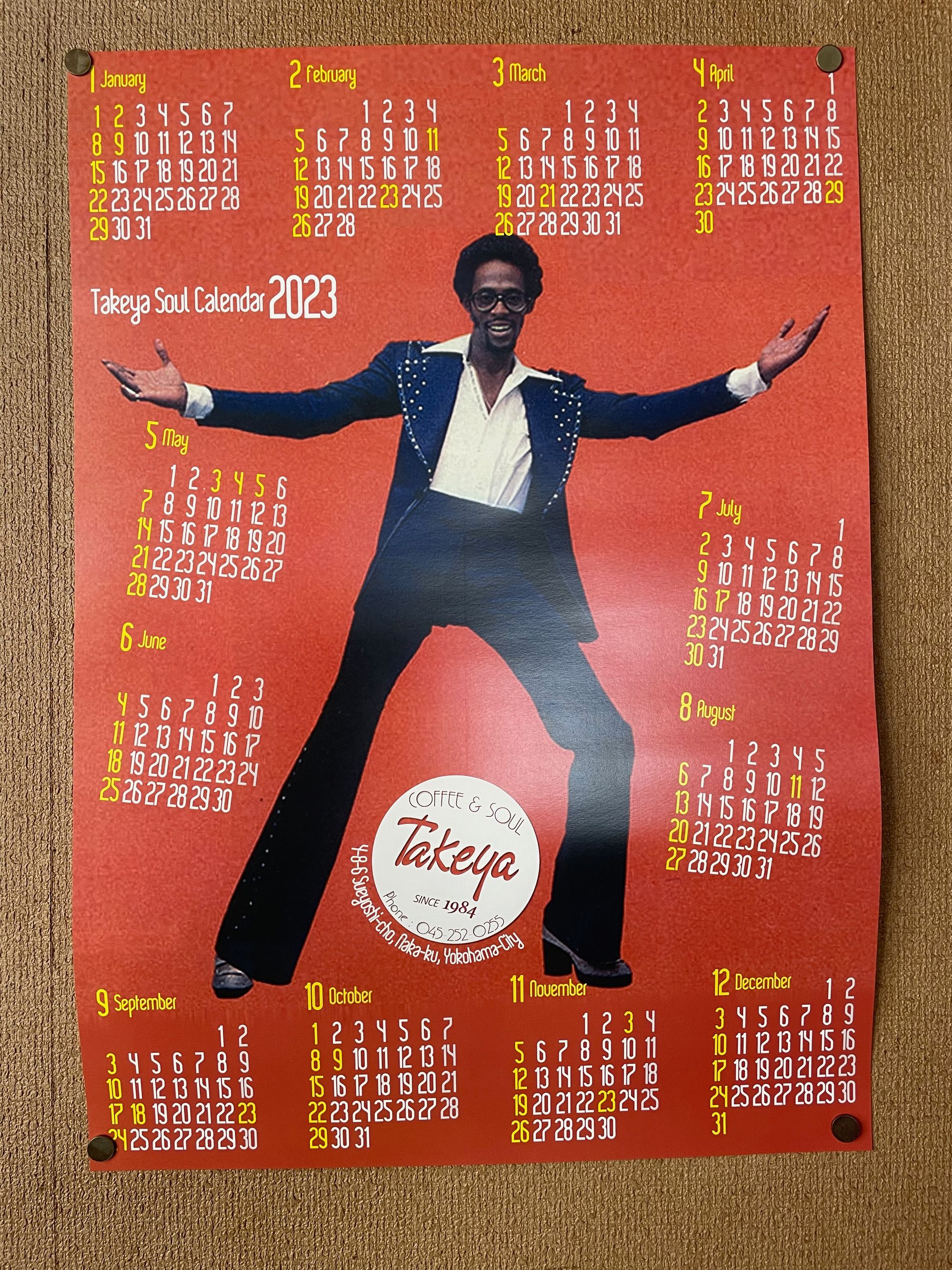
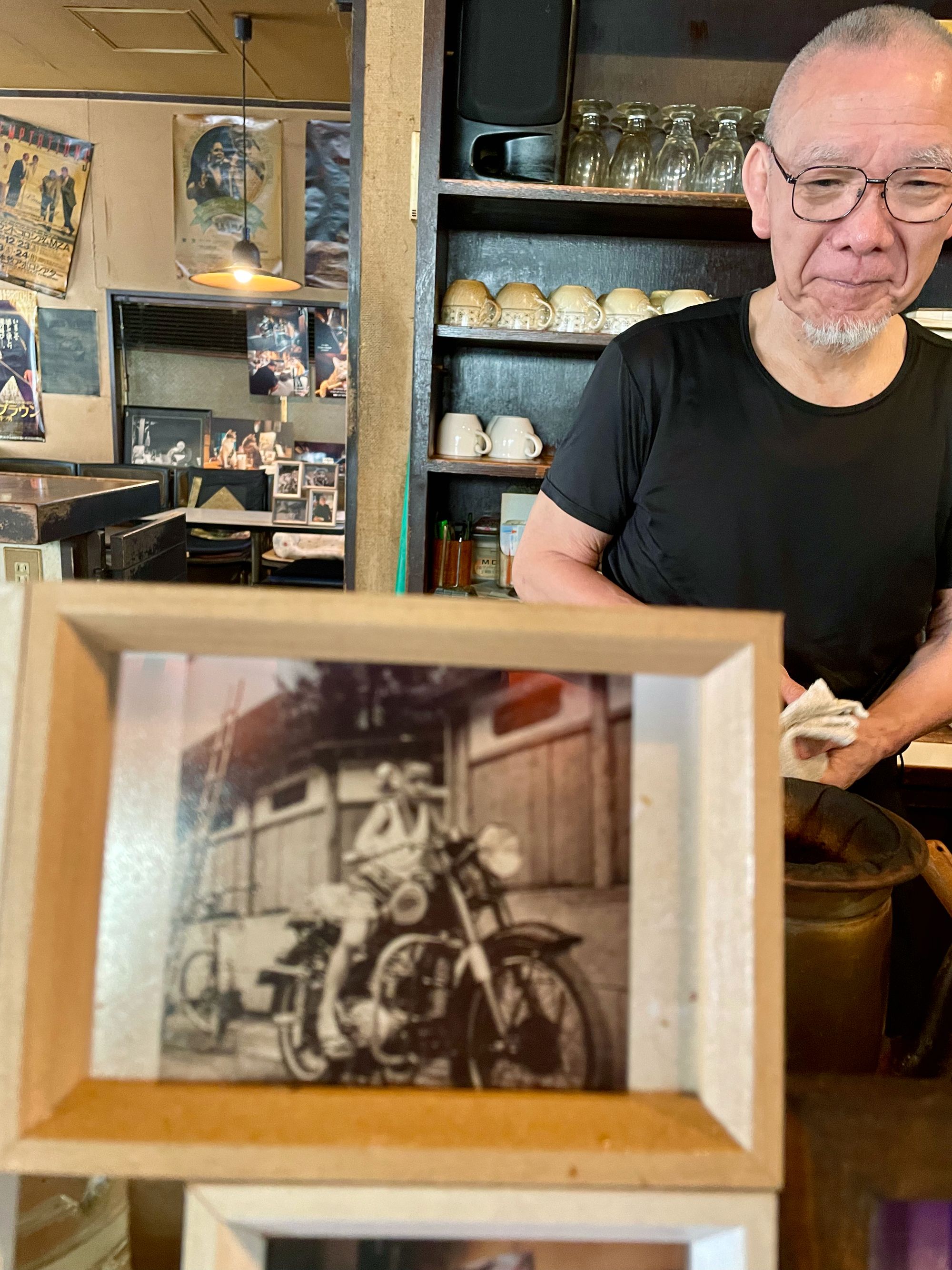
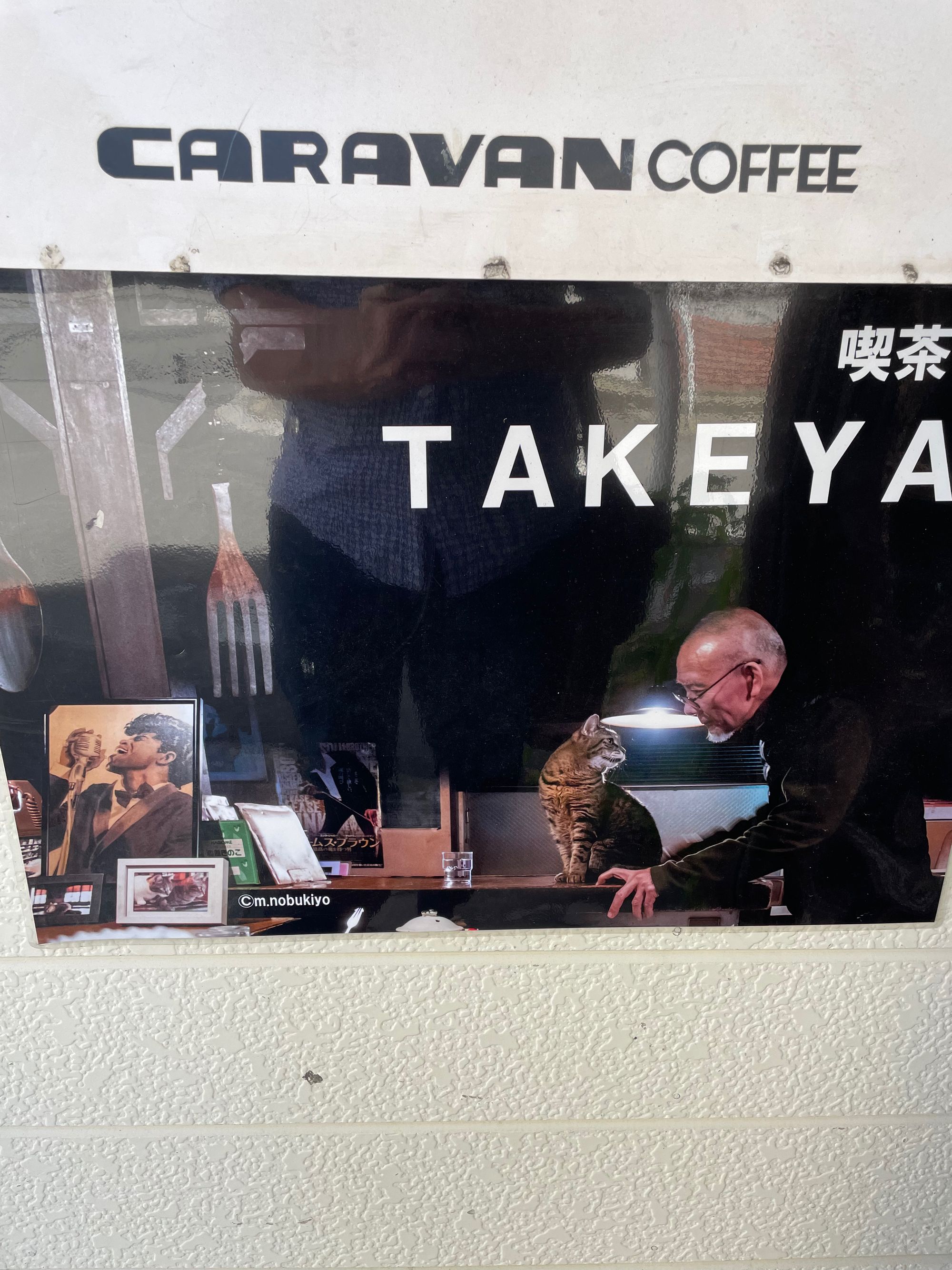
Takeya-san: I've been here for 40 years.
Me: Oh, in Yokohama?
Takeya-san: No, in this building.
Me: 😮!
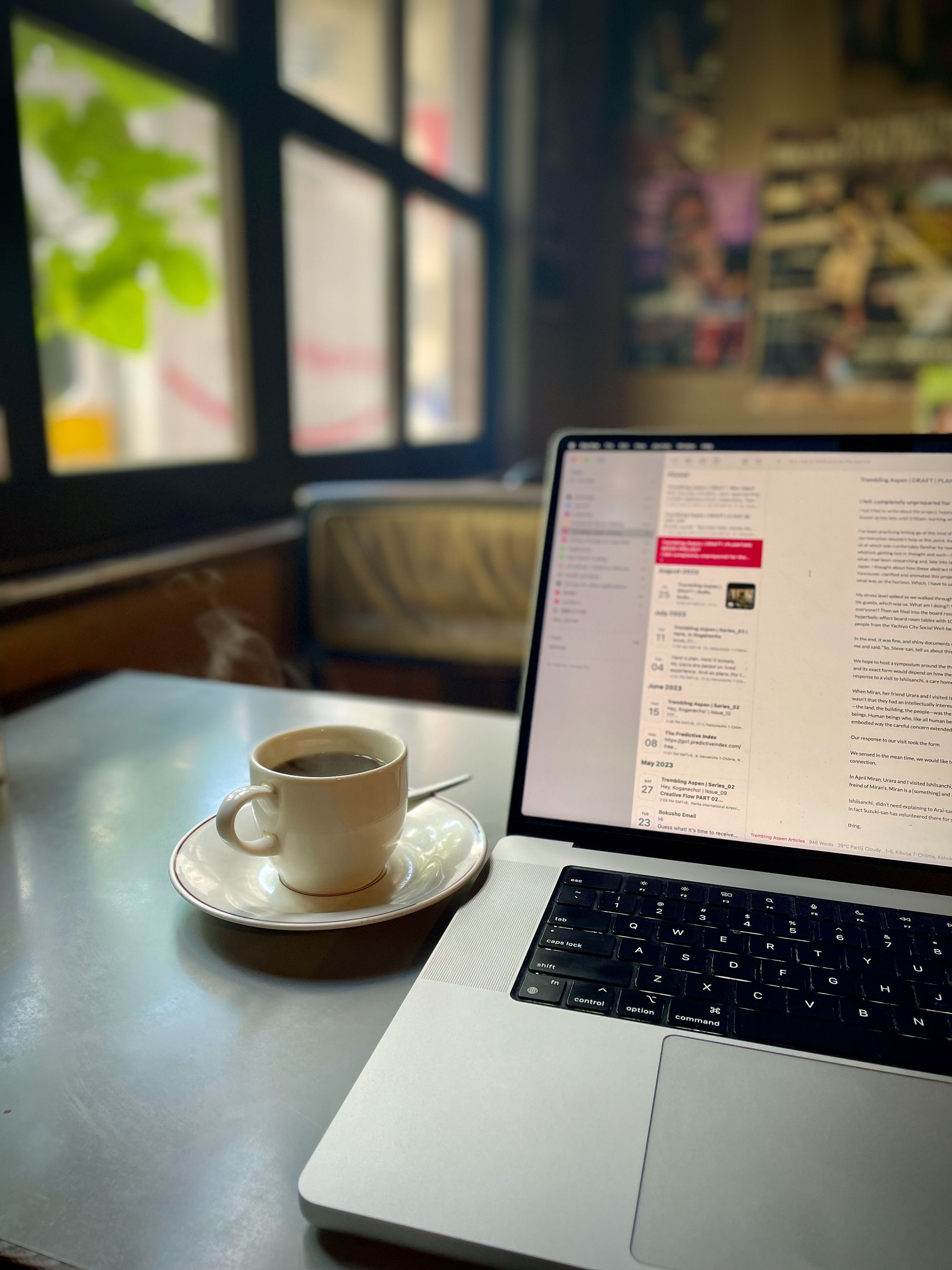
I took the picture above, settled in to work. And then life happened.
Sometimes making involves hunkering down with as much time as you can secure, aiming for half-day blocks. And sometimes making involves responding to life with curiosity as it unfolds. There is no guide book for determining which you might be experiencing at any given time. Sorry.
Joar, one of the short term artists in residence, and Hunter, a short term researcher doing research on resident artists, came in.
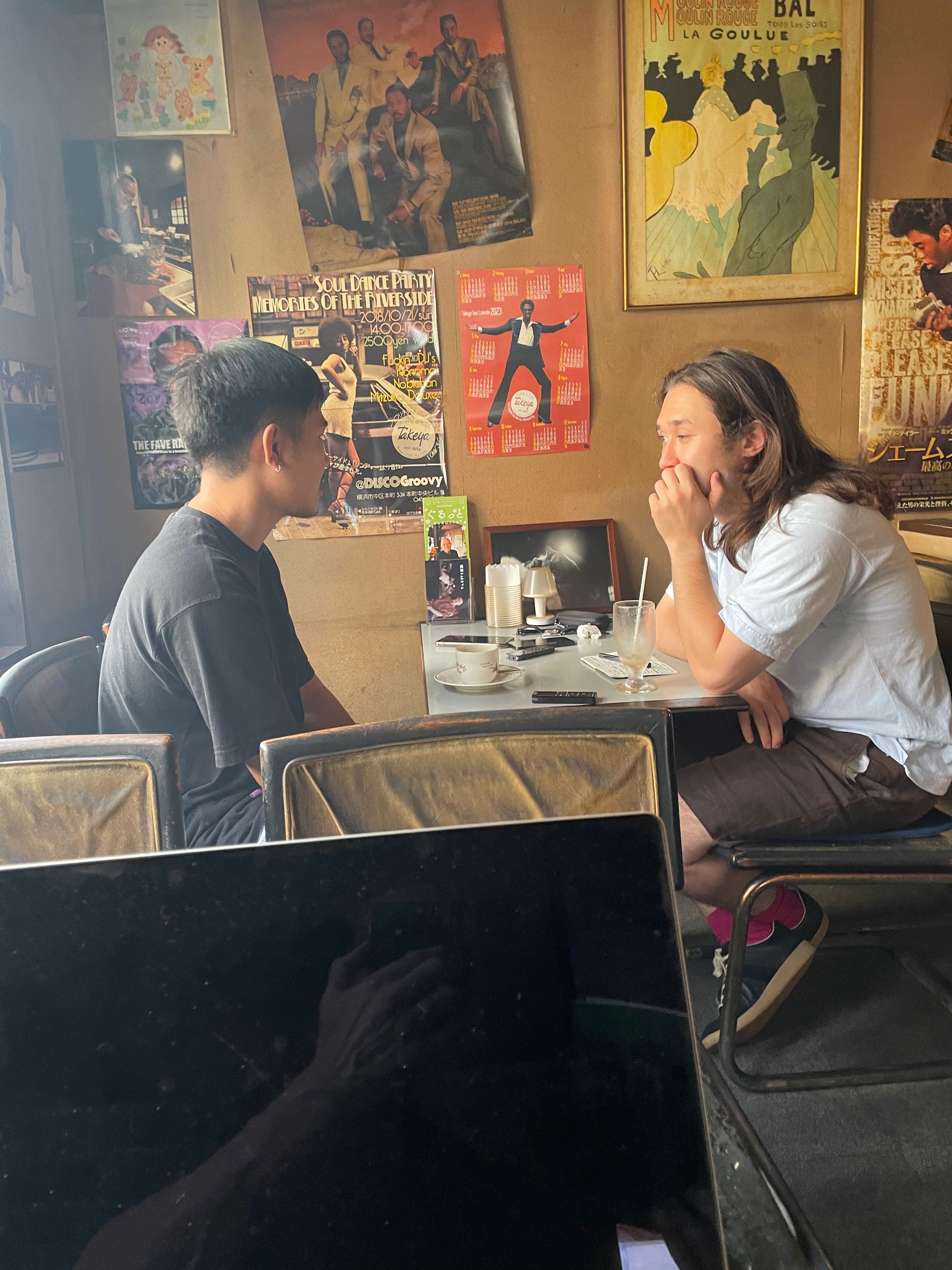
Greetings and salutations were exchanged. After an appropriately polite amount of time, I put in my noise cancelling ear buds and transitioned back to work. That's Joar and Hunter up above, right before I typed my first sentence and after they sat down.
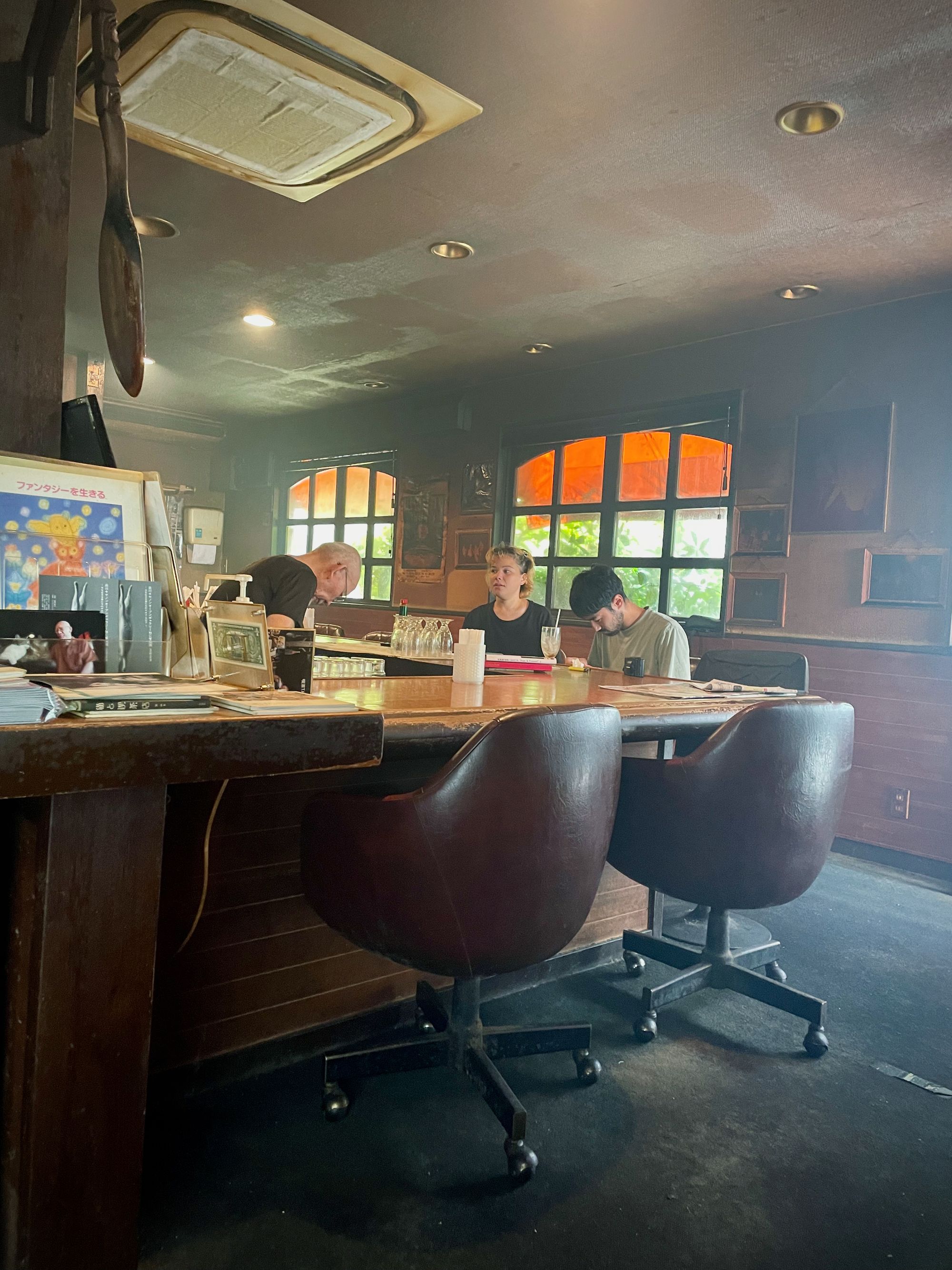
And then Michio and Seiichi arrived. Hey! You know about this place too? hahaha...as I made a mental note to look for another place in which to do my maker work. Greetings and salutations were exchanged. After an appropriately polite amount of time, they went and sat down. That's them up above, right before I put in my ear buds and after they sat down. (Also, that is cigarette smoke hanging in the air, as yet an enjoyable nostalgic novelty for me.)
I was in the midst of putting in my ear buds when the eponymous Takeya-san of 喫茶TAKEYA came over. He handed me two soft covered books, decades old, well used, photos on the front. I had no idea what they were or why he was handing them to me. Um...okay? I try to determine—in Japanese mind you, so I'm not 100% sure if I've asked what I thought I asked—what the books are about.
Are you in the books?
No.
Friends of yours?
No.
Interesting book?
Yes.
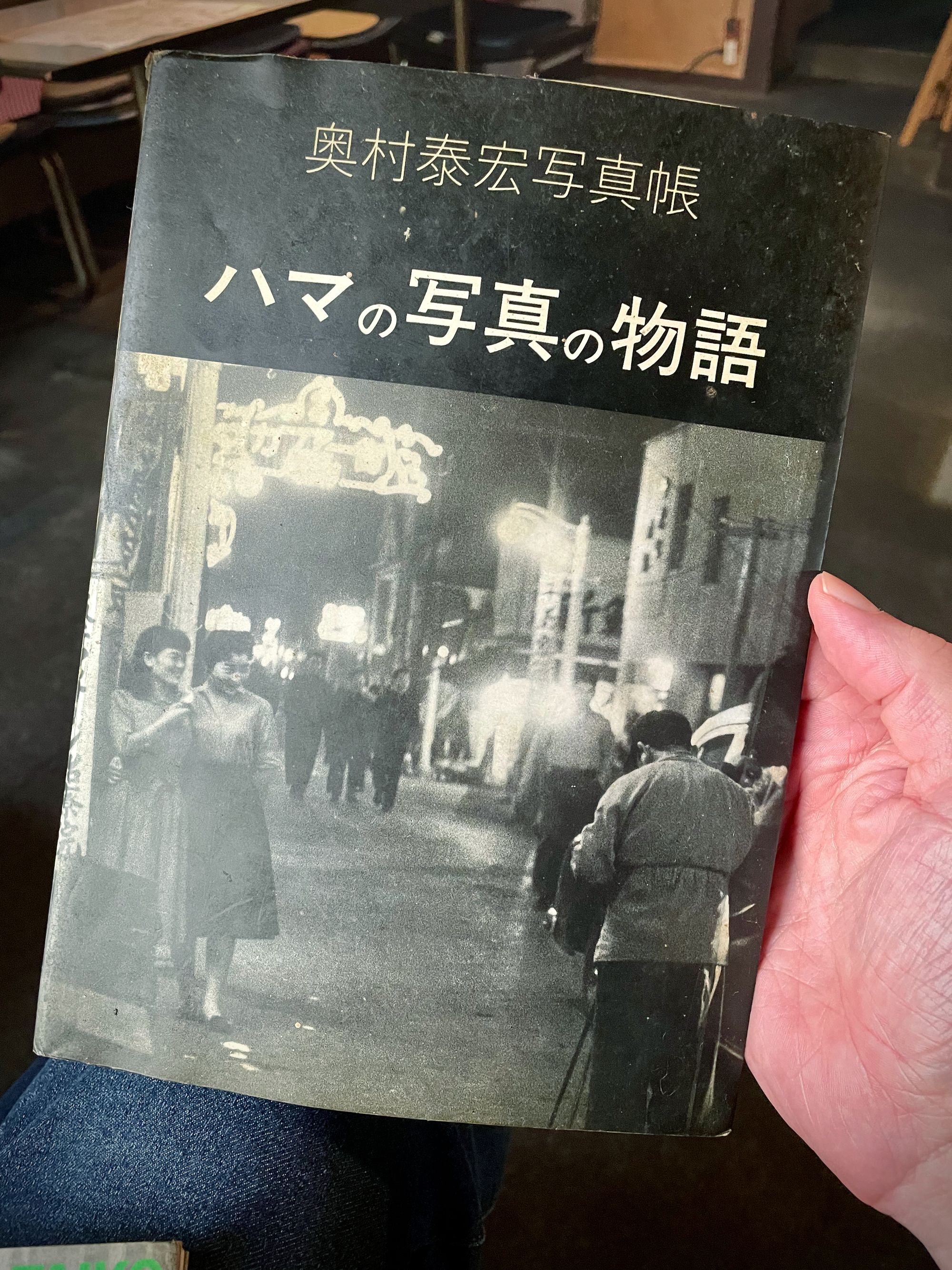
Okay I’ll do the polite thing and have a look.
As I flipped through pages I was transfixed.
Holding space for oneself, and the experience of one’s life requires a capacity to pause, and to determine when to pause. To not be jittery and move on, but to be with something in front of you, as it presents itself.
Well-being of speech is like a lute without strings. Even without strings, the musical instrument proclaims itself. This is an image of our speech being settled. It doesn't mean that we're controlling, uptight, trying hard not to say the wrong thing. It means that our speech is straightforward and disciplined. We don't start blurting out words just because no one else is talking and we're nervous. We don't chatter away like magpies and crows. We've heard it all; we've been insulted and we've been praised. We know what it is to be in situations where everyone is angry, where everyone is peaceful. We're at home in the world because we're at home with ourselves, so we don't feel that out of nervousness, out of our habitual pattern, we have to run at the mouth. Our speech is tamed, and when we speak, it communicates. We don't waste the gift of speech in expressing our neurosis. ~Pema Chodron, When Things Fall Apart
Here is what I think. "We're at home in the world because we're at home with ourselves, so we don't feel that out of nervousness, out of our habitual pattern, we have to...[insert any verb here]"
Not moving on is the path I chose. I decided to be with this book, with these images. As I leafed through, each page offering a fragrant patina of age, I tried to read and translate what I could. I could only understand the odd word here and there, and then I noticed the captions referring to subject matter, often a location.
I found 伊勢佐木町 / Isezakicho. Where I was that very moment.
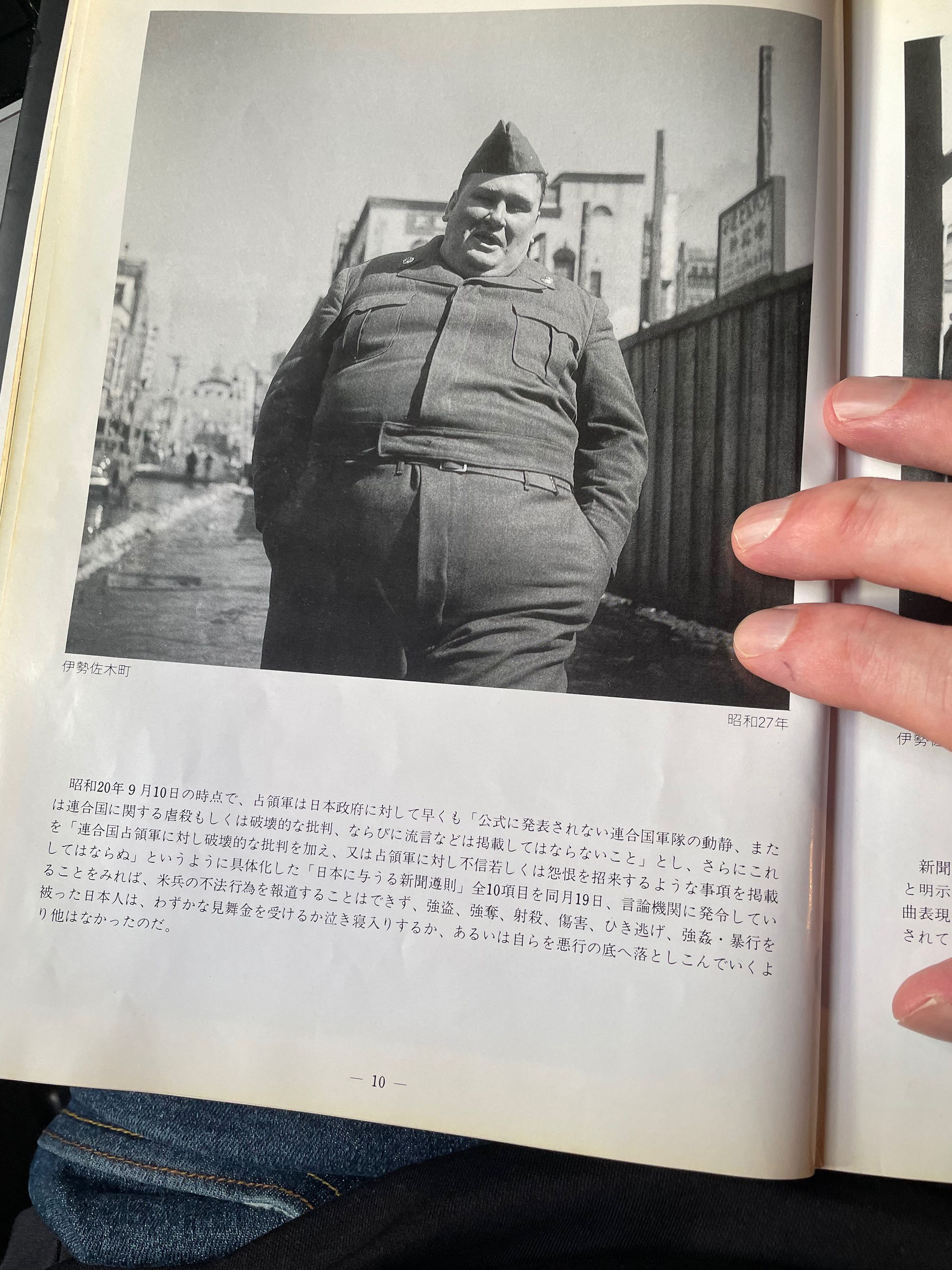
I found 野毛町 / Nogecho. Where I had dinner last night. Now a cool neighbourhood that people from Tokyo will travel to for a change of pace. Lots of tiny photogenic little izakaya and yakitori shops.
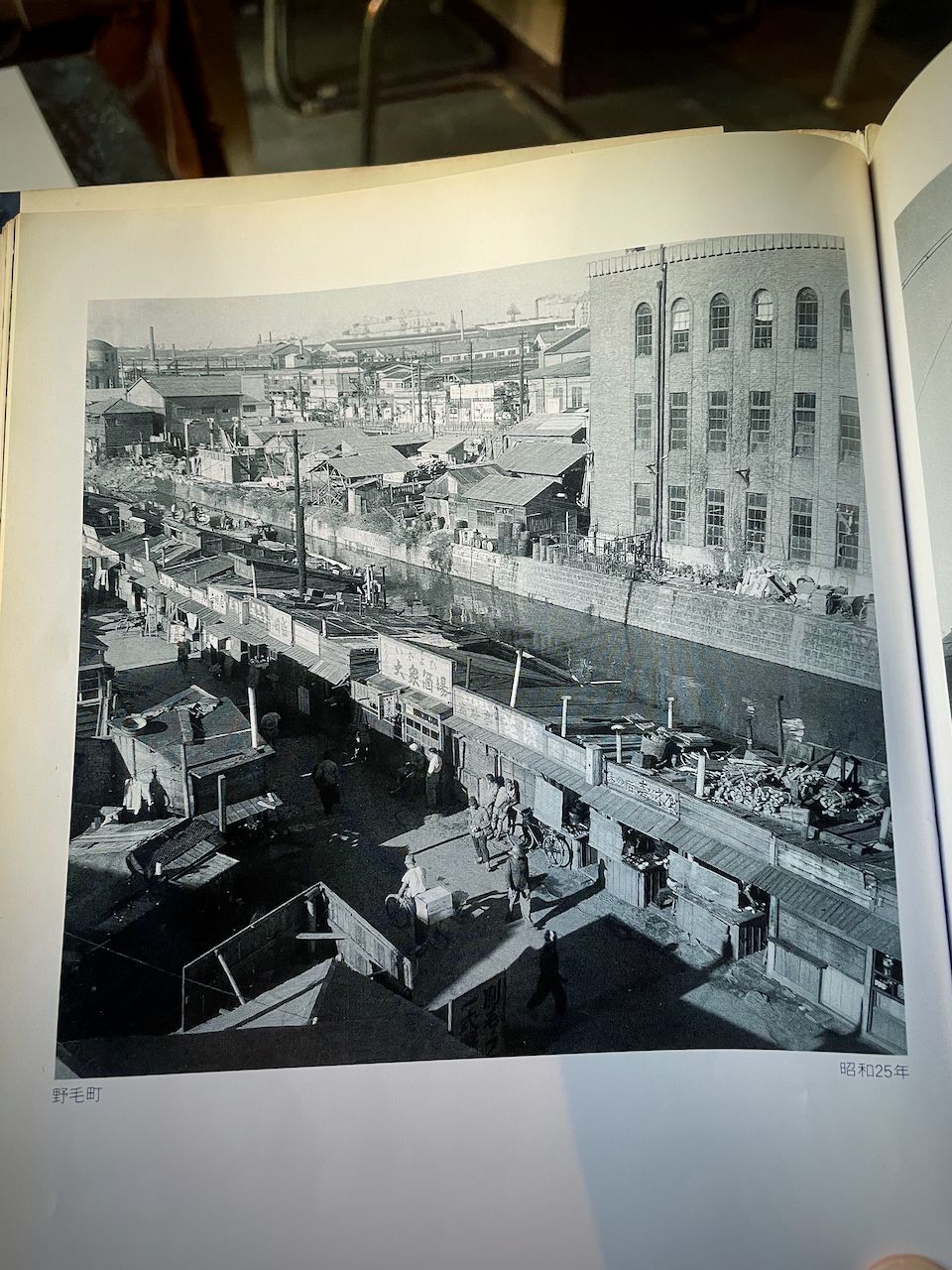
I found 日ノ出町 /Hinodecho. The station I arrived at my first night in Yokohama. Where Theo-san, then a stranger, now a friend, met me. The station I use the most to get where I am going, i.e. home.
I found 黄金町 / Koganecho. Where I live. Again, home. My community for the next little while.
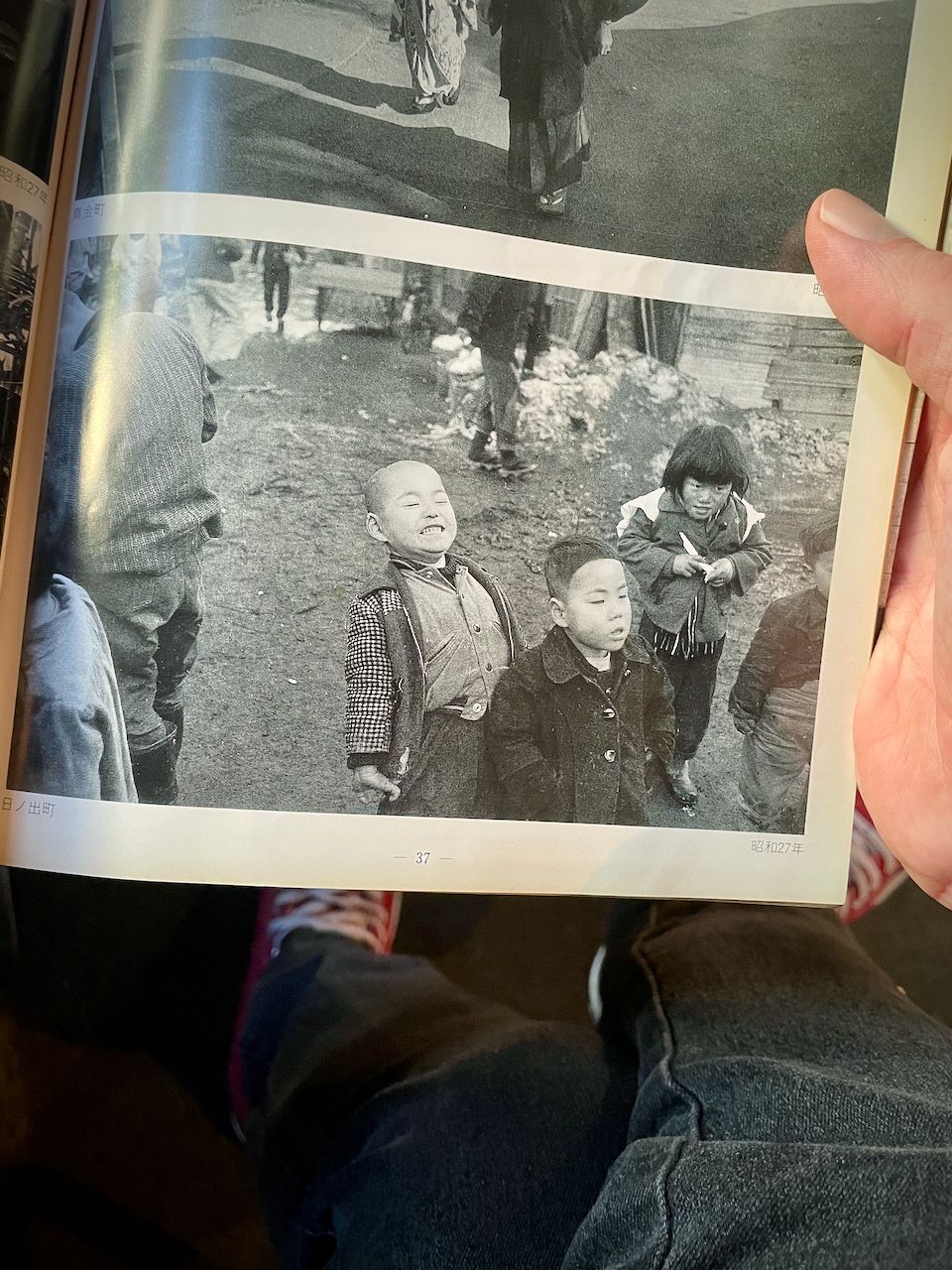
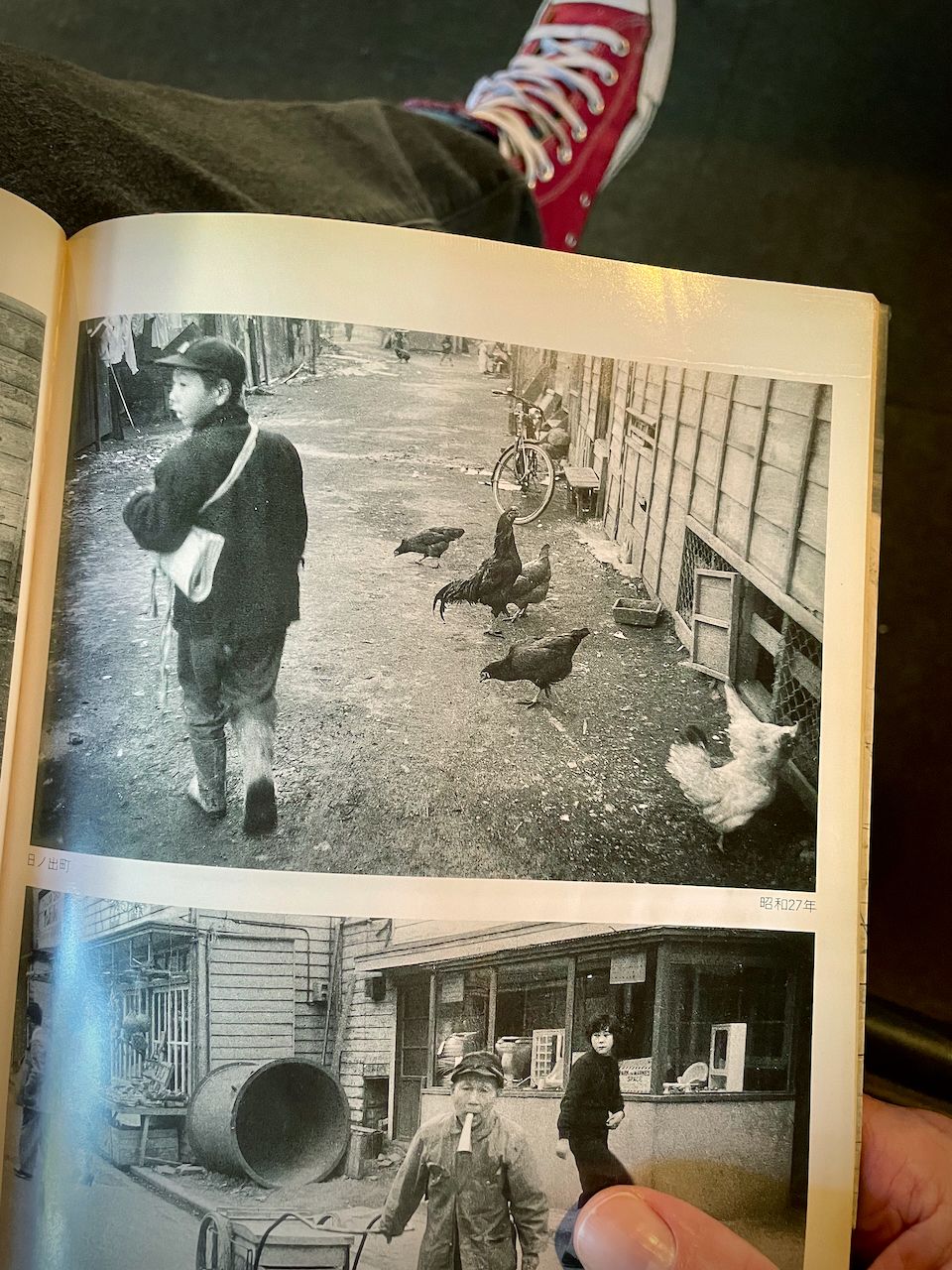
I was now leafing back to front, looking for other places I recognized. Seeing what I could see, now that I could determine where the photos had been taken.
I got to the first picture in the book. The large caption 占領された街 means Occupied City.
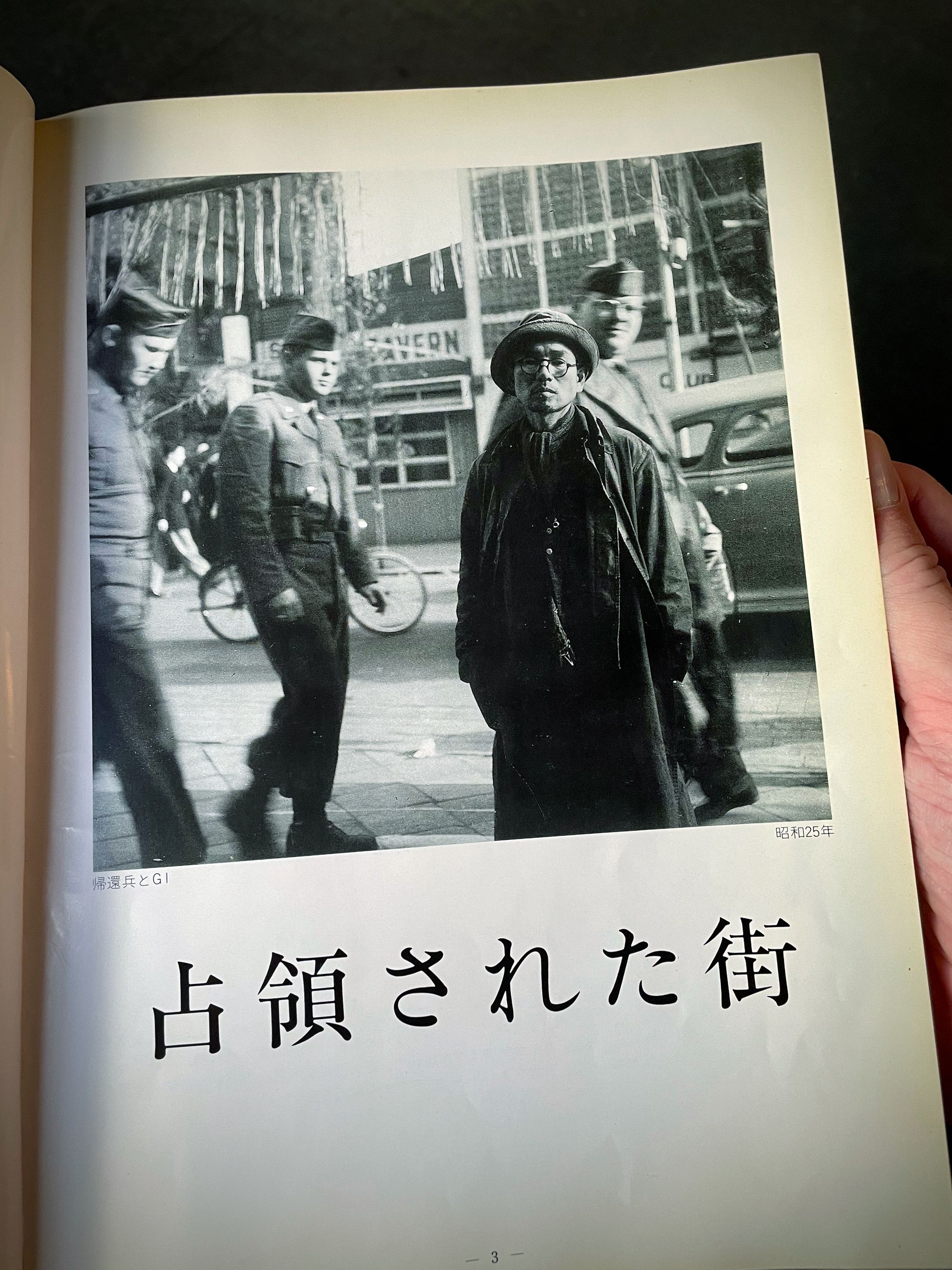
I was, once again, arrested. Stopped in my tracks. I turned the page.
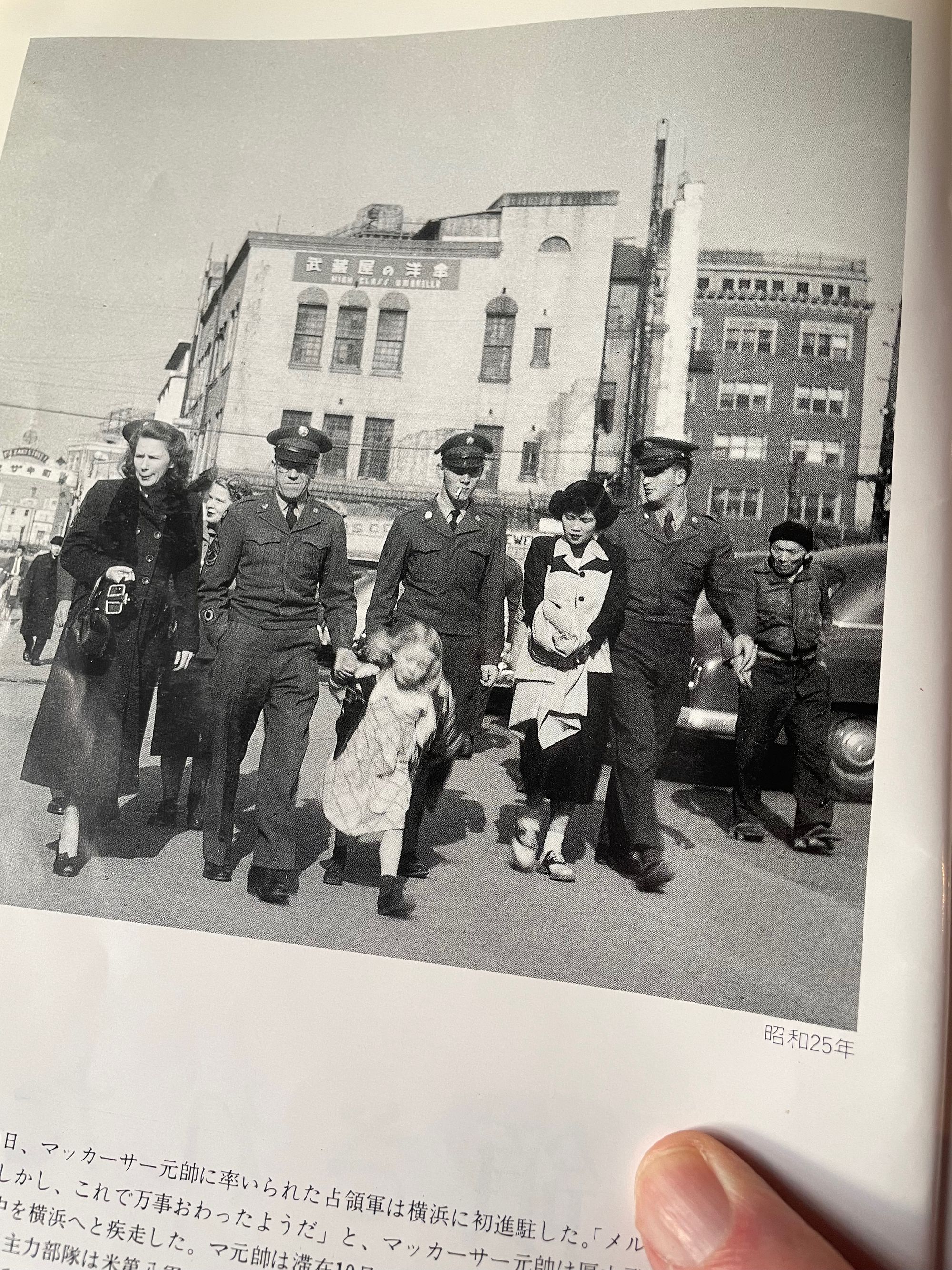
Something was grabbing me, all of me. My eyes, my thinking, my soul, and it was something I didn't fully understand. I turned back to the first picture, and tears started to flow, right then and there. Dammit. This isn’t what I was planning to do with my afternoon, people I know are sitting right here, I have work to do.
You know what, fuck it. I’m letting this in.
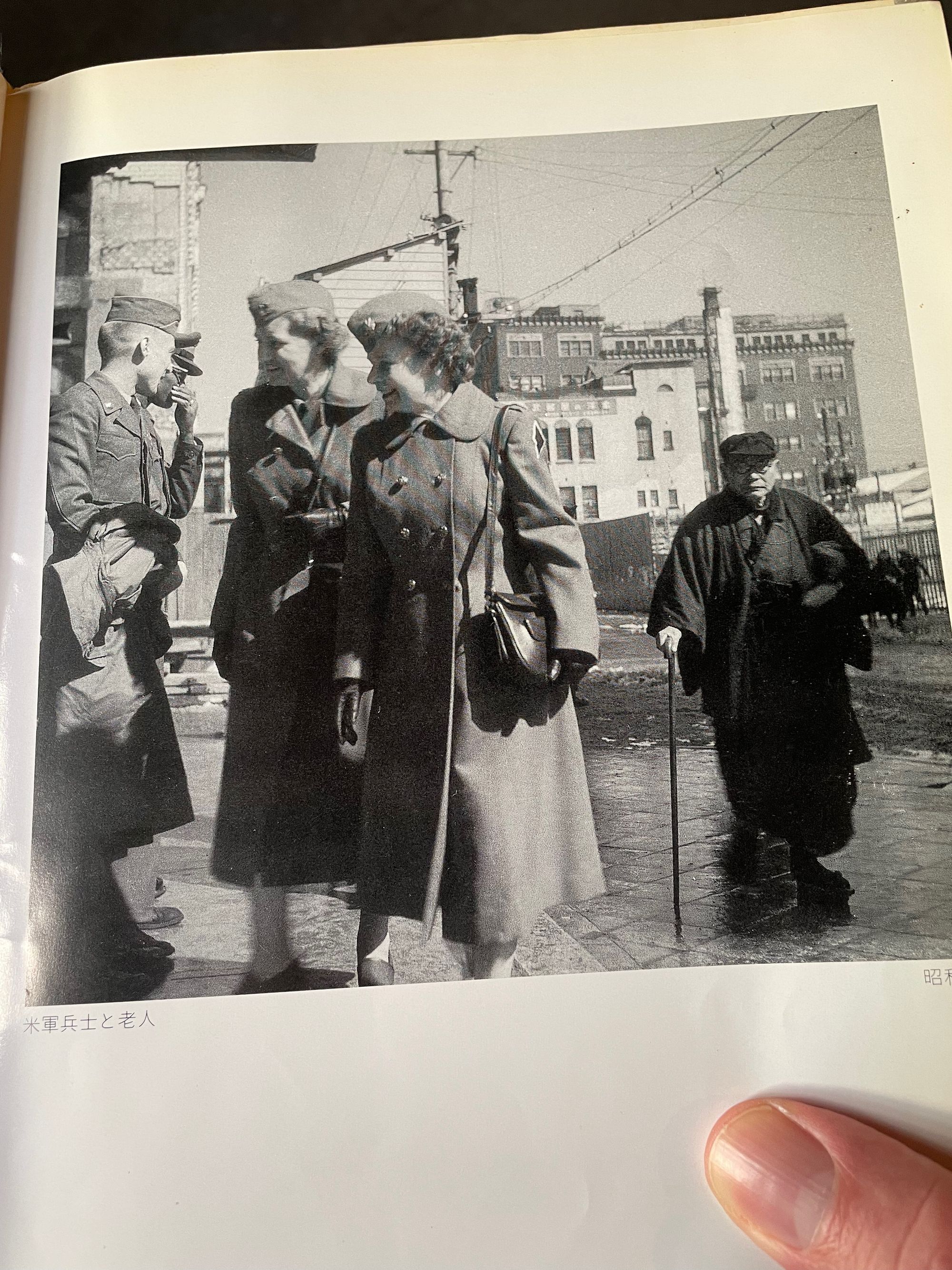
I sat there and cried for a while.
Isn’t this the definition of art? A gesture—the click of a button—reaches through time. The gesture reaches forward, I reach back to meet it, holding space for myself, and the experience of my own life. All while—or maybe especially while—I sip coffee in a smokey kissaten, members of my community nearby, in the city in which my life unfolds, all an ocean away and so different from, my other home.
I invite you to look at those three pictures again, the first three in the book, and think of the man you don’t see, behind the camera, Taiko Okumura (奥村泰宏)
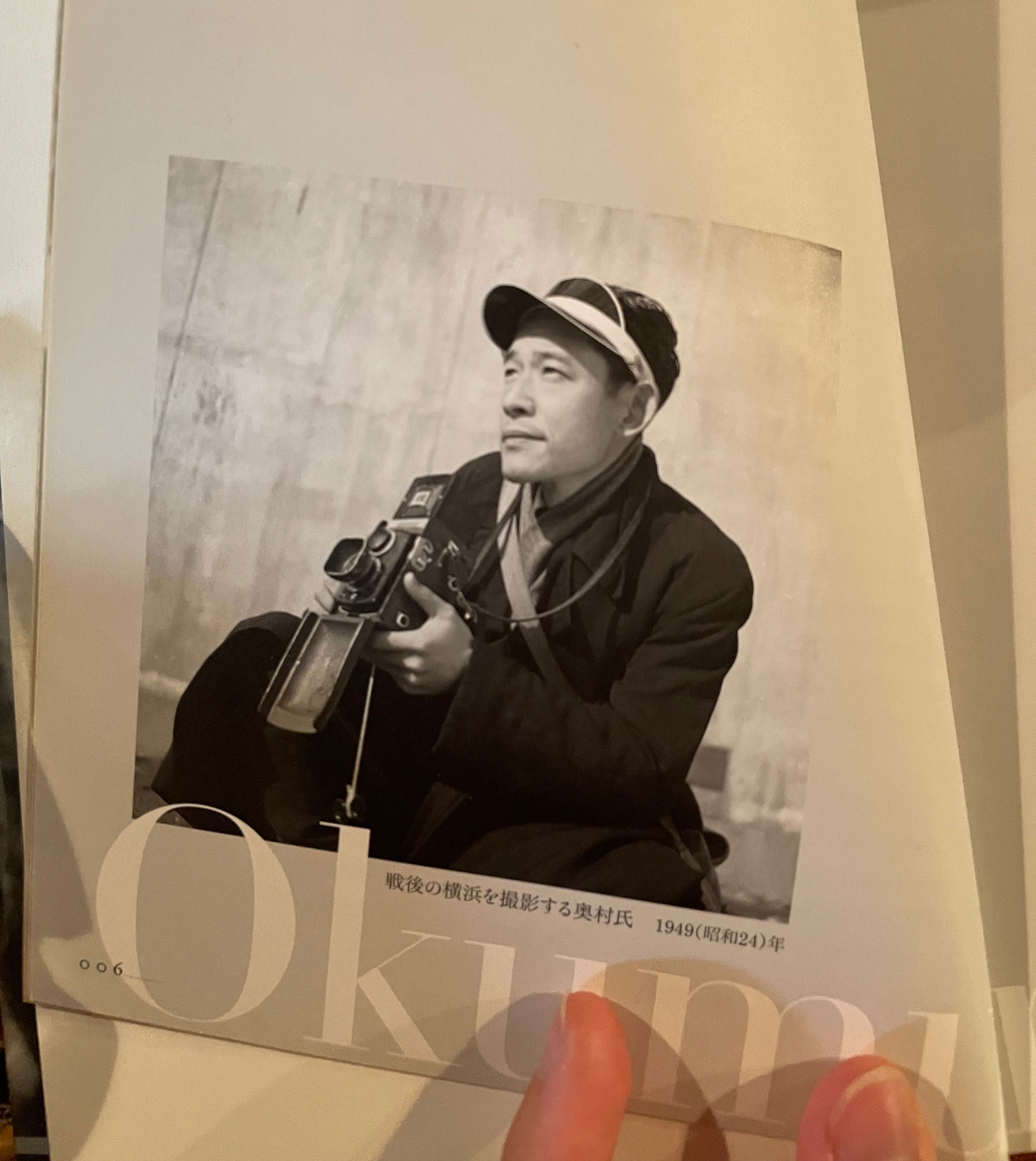
That's him, in the photo above. Think about his presence in the scenes above. His hopes, his desires. His pain, his sorrow. I invite you to think about the creative act of going out among, of being with, of seeing and feeling the world around him. Ashes. Literal ashes. Hope, desire, pain and sorrow. Friends, neighbours and strangers experiencing hope, desire, pain and sorrow akin to his own; and at the same time, not his own but their own.
I invite you to look at the people in the pictures. I invite you to look at the betweenness, the body language of interaction, and what it says about hope, desire, pain and sorrow.
All of that, gathered into one moment. Click.
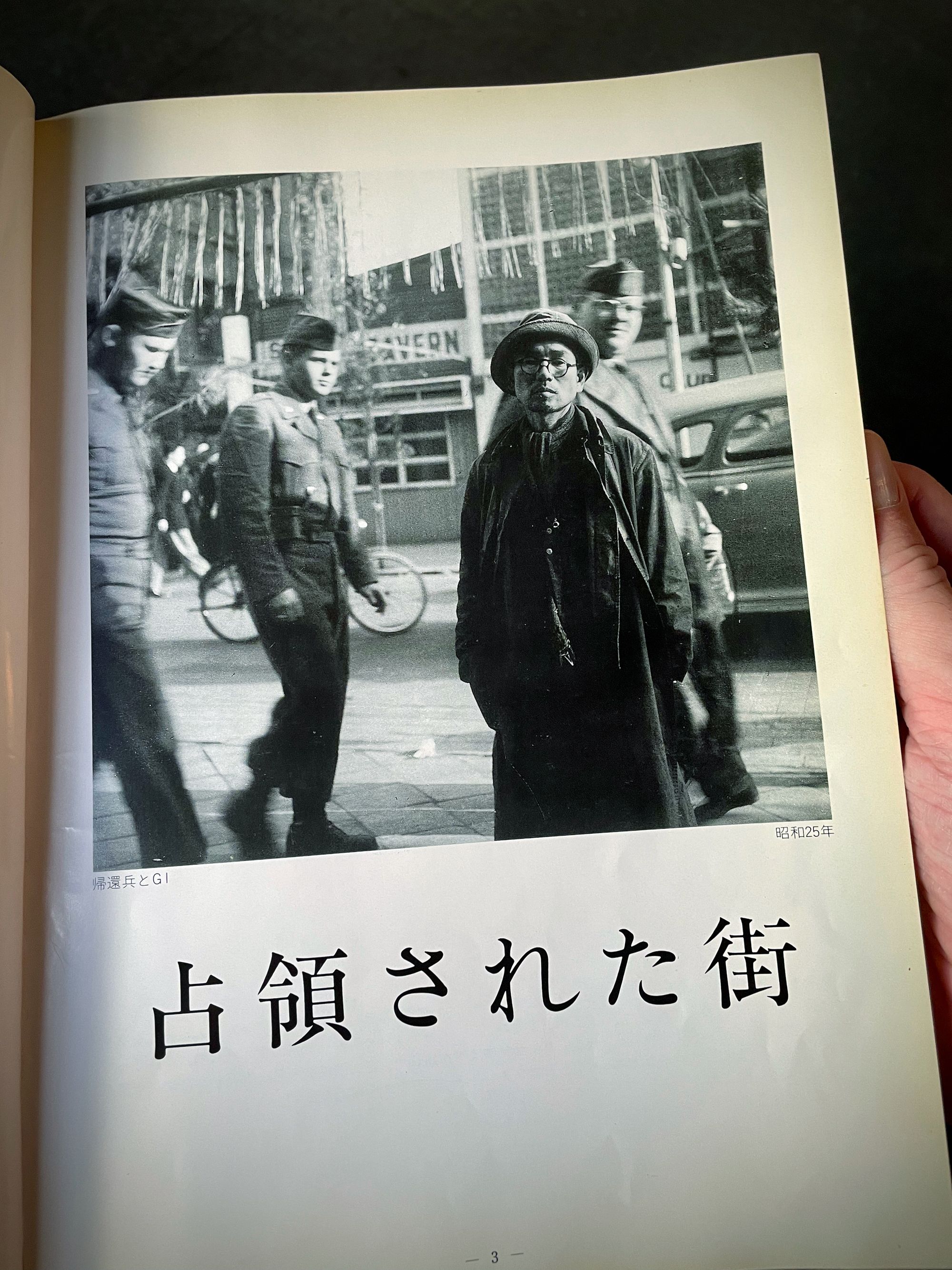
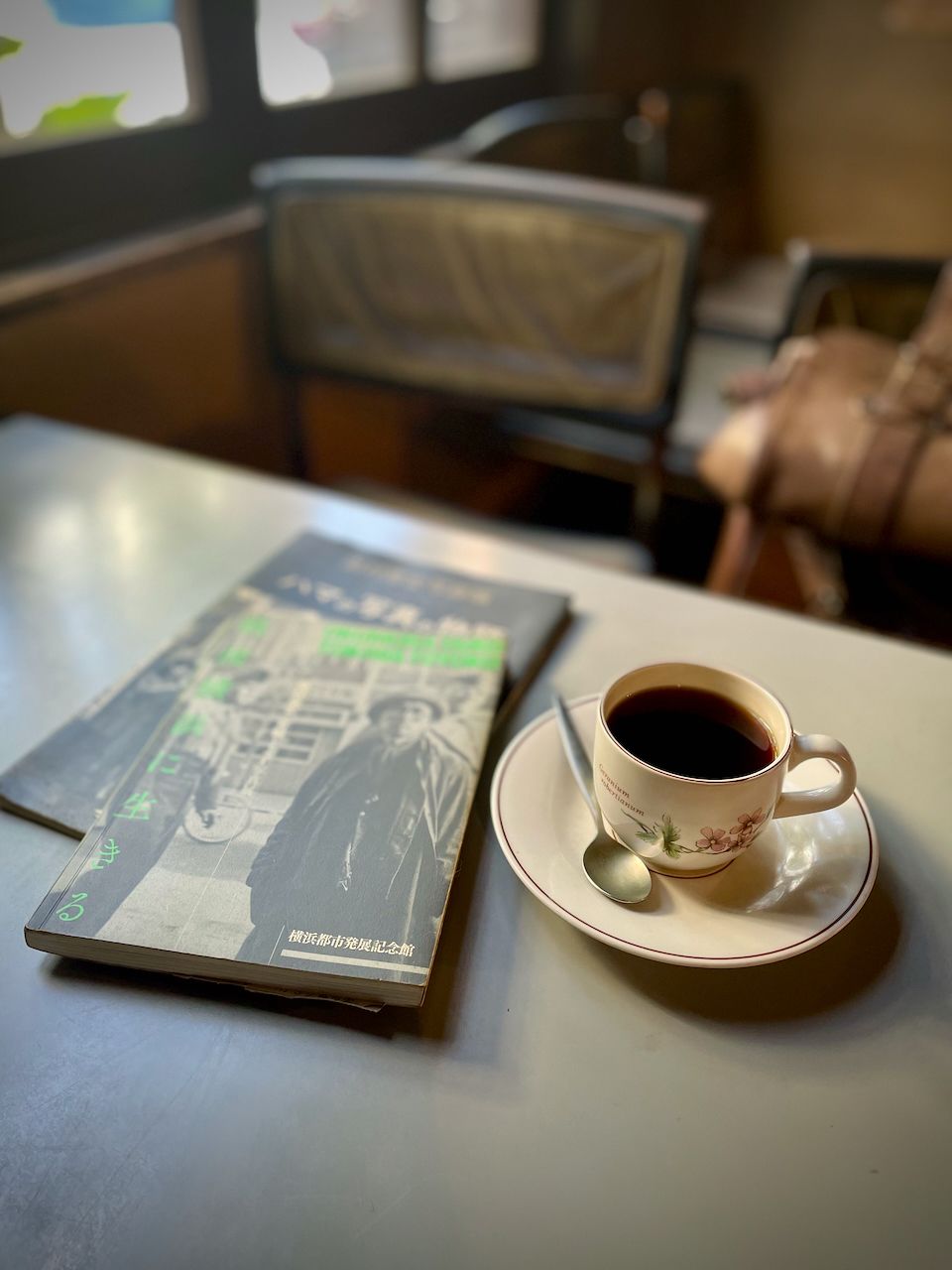
The book: 奥村泰宏写真展実行委員会『奥村泰宏写真展―ハマの写真の物語』1990年。
* There are two types of schedule, which I'll call the manager's schedule and the maker's schedule. The manager's schedule is for bosses. It's embodied in the traditional appointment book, with each day cut into one hour intervals. You can block off several hours for a single task if you need to, but by default you change what you're doing every hour.
When you use time that way, it's merely a practical problem to meet with someone. Find an open slot in your schedule, book them, and you're done.
Most powerful people are on the manager's schedule. It's the schedule of command. But there's another way of using time that's common among people who make things, like programmers and writers. They generally prefer to use time in units of half a day at least. You can't write or program well in units of an hour. That's barely enough time to get started. ~ Paul Graham, July 2009
* 喫茶 (kissa i.e. kissaten) a coffee shop indicative of Japan's bubble era, particularly the 1980's. i.e. the decades after the 90's are regularly referred to in Japan as a post-bubble era, which is elsewhere referred to as the world's first experiment in a post-growth economy.
My participation in the Koganecho Artist in Residence program, the art work I create while here, and this very newsletter were all made possible by members of The Mycelium Council. If you enjoy Trembling Aspen, a newsletter about living your life like a work of art, from me, Steve Frost, please consider joining.
